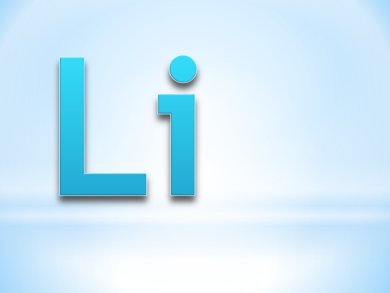To date, 118 chemical elements have been found. Professor Mario Markus, Max Planck Institute for Molecular Physiology, Dortmund, Germany, takes a look at each element, presenting a poem based on its natural properties along with a scientific overview of each element.
All 118 poems – in addition to some poems about elements that only exist in theoretical simulations – are published in the book Chemical Poems: One On Each Element by Mario Markus. ChemViews magazine presents a selection of these poems over the next months.
Lithium |
Lithium |
|
|
Soft, silvery-gray metal. It was discovered by the Swede Johan Arfvedson in 1817. The name comes from the Greek word lithos meaning “stone”. It is the lightest solid element and its density (0.53 g/cm³) is about half that of water. This fact makes it suitable for alloys, mostly with aluminum, used in the construction of airplanes, high-speed trains and bicycles. The “oxygen masks” in airplanes (or submarines), generally do not contain oxygen, which would occupy too much space, but solid lithium dioxide, which reacts with the breathed out carbon dioxide, producing lithium carbonate and oxygen. Lithium carbonate is used to treat “bipolar disorders”, acting on both mania and depression [1]. It is stimated that about 1 % of the world’s population suffer from this disorder. There is a long list of famous possible “bipolars” although it is difficult to provide evidence, give either the distance of time or their reticence to expose themselves. There are, however, indications that Robert Schumann, Charles Dickens, Jack London, and Ernest Hemingway had bipolar symptoms [2]. The largest known deposit of lithium is in the “Salar de Atacama”, a salt lake in Chile [3]. Lithium minerals are transported from the desert by the river San Pedro and deposited in that salt lake. [1] V. Salvi et al., J. Clin. Psychiatry 2008, 69, 1307–1318. DOI: 10.4088/JCP.v69n0816 |
The grave of the feeble breath
|
Professor Mario Markus
Max Planck Institute for Molecular Physiology, Dortmund, Germany.
www.mariomarkus.com
Professor Mario Markus
Max Planck Institute for Molecular Physiology, Dortmund, Germany.
www.mariomarkus.com
Chemical Poems – One On Each Element,
Mario Markus,
Dos Madres Press 2013.
ISBN: 978-1-933675-98-5
Perfectbound, 308 pages, English, $30

Interview with Mario Markus: Poetry and Chemistry,
ChemViews magazine 2013.
DOI: 10.1002/chemv.201300010
The poems have also been published in German in:
- Chemische Gedichte,
Mario Markus,
Shaker Media, Herzogenrath, Germany, 2011.
ISBN: 978-3868587012
See all poems published so far by ChemistryViews.org.





